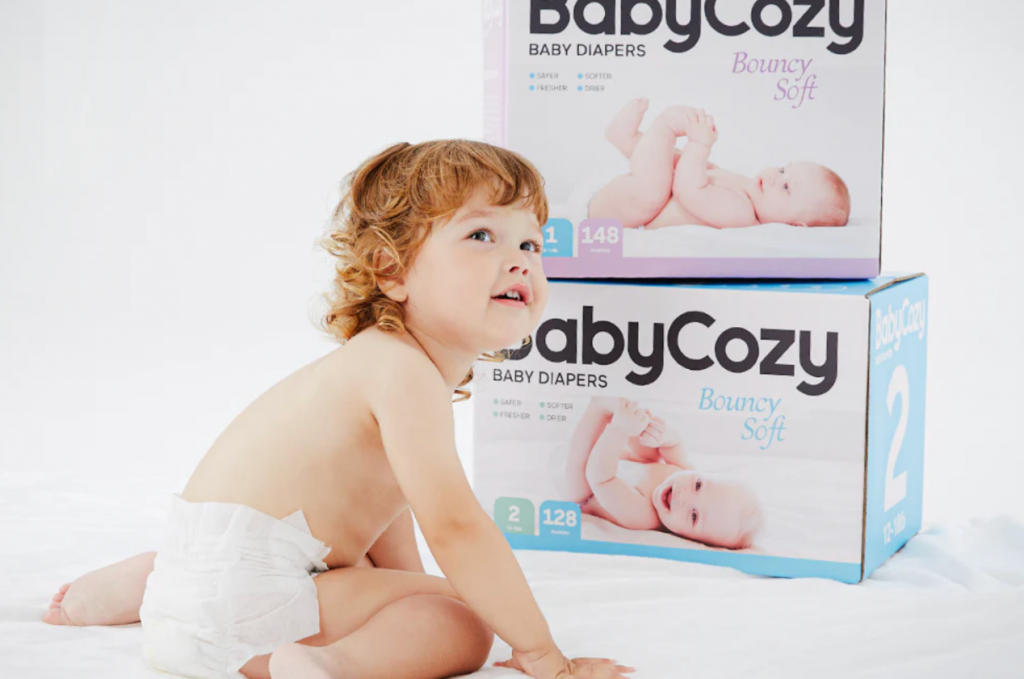For something your baby will be wearing for 24 hours of the day, super soft baby diapers and healthy materials such as plant-based elements should be a top priority. Despite the wide selection available on the market, new and inexperienced mothers have nothing to fear if they follow our guide about all the factors you must look out for when selecting the best diaper for you.
Leak-Proof
The main goal of a diaper is for your baby to be able to go to the bathroom without creating an external mess. The only way for this to be feasible is if the diaper you choose is leak-proof, which can, unfortunately, be difficult to find. There are a few features that can affect how leak-proof a diaper will be, especially the absorbency of the material and the fit of the diaper.
In order for a diaper to prevent leakages, the layered material must act as a sponge to absorb all of the fluid until it is time to be changed. In general, the more layered the design, the stronger absorption baby diapers you get. The fit of a diaper is also vital in its efficacy to retain fluid. The diaper must fit snugly around the legs without squeezing too tightly that it prevents adequate blood circulation. Ideally, a flexible fit will stop leakages without causing discomfort.
Additives
One thing you might not know about many commercial diapers is that they contain chemical additives that can be harmful to the sensitive skin of your newborn. There are certain substances you should keep a particular eye out for when researching the disposable diaper for you, including but not limited to chlorine, phthalates, latex, fragrances, and dyes, that have proven to cause irritation in sensitive skin.
When it comes to your baby, there is no point in taking risks by choosing a diaper brand with additives that are known to cause rashes and other adverse side effects upon contact with the skin. Instead, electing for a more natural, chemical-free natural diapers reduces the likelihood of causing discomfort for your child, that means choose the hypoallergenic diapers.
Upper Surface Texture
Baby skin is sensitive, so when choosing which diapers to use, it is beneficial to consider how compatible the upper surface texture of the diaper is with their skin. Disposable diapers typically consist of multiple layers that each play a role in preventing leaks for your baby.
The top sheet of the diaper is the layer that comes in contact with the skin, allowing the fluids to quickly transfer into the absorbent layers. It is important that mothers are mindful of the upper surface texture of the diaper because different designs can affect both the efficacy of the diaper as well as how comfortable it is against the skin.
Absorb Velocity
As strange as it may sound, there is some debate with diapers on what the ideal absorb velocity is – and ultimately, it comes down to the parent’s choice. There are pros and cons to finding a diaper with the fastest absorbency, depending on the age of your child and how close you are to potty-training them.
If they are nearing the potty-training age, you may want them to “feel” the mess before it disappears, teaching them to understand the queues of needing to use the bathroom. On the contrary, to avoid leakages and irritation of the skin, the diaper must efficiently absorb the fluid as fast as possible.
Back Penetration Rate
Perhaps one of the most important features of an adequate diaper is the back penetration rate – A.K.A., how capable is the diaper of preventing overflows and leakages. This factor depends on both the design of the fit and how it adheres to the legs, as well as the thickness and absorbance of the material.
Ideally, your diapers for baby will have plenty of room to “fill up,” without being too loose that it is uncomfortable for the baby. It is important it fits snug so that there aren’t any leakages but beware of the adhesive ingredients that may be harmful to the baby’s skin when looking for a secure design.
Breathability
One of the surprising, yet important, features of a functional diaper is its breathability. Much like other clothing items we wear, the fabric of a diaper must contain small pores that allow water vapor and particles to escape while still keeping the mess contained.
A breathable diaper will be monumental in keeping your baby’s skin healthy, fresh, and rash-free – especially when a majority of diaper rash is caused by condensation being trapped inside the stuffy environment. Look for the Water Vapor Transmission Rate on a diaper label to know for certain that a diaper offers the breathability your baby needs.
Softness
Much like how adults tend to prefer the soft, smooth texture of a quality pair of underwear, your baby will appreciate the same care in a diaper choice. Usually, the more layered the diaper texture, the softer touch feels against the skin. Choosing a super soft diaper that uses extra-sensitive material without unnecessary perfumes and additives will prevent irritation and promote a comfortable experience for your child.
Your baby deserves to have the comfortable underwear experience that we all know and love, so it is important you take care when choosing which diapers to buy.
Despite the wide range of options available on the market, once you consider all of the features that improve the effectiveness and comfort of diapers, you’ll be able to conquer the overwhelming display of options and choose the diaper that is perfect for your situation. It can be difficult to know which features to look out for and which to avoid, but if you follow the BabyCozy guide, you can feel relaxed knowing your baby’s needs are care of.
To connect with like-minded mother’s and to learn more tips and tricks about motherhood, join our community at MomCozy.com.
